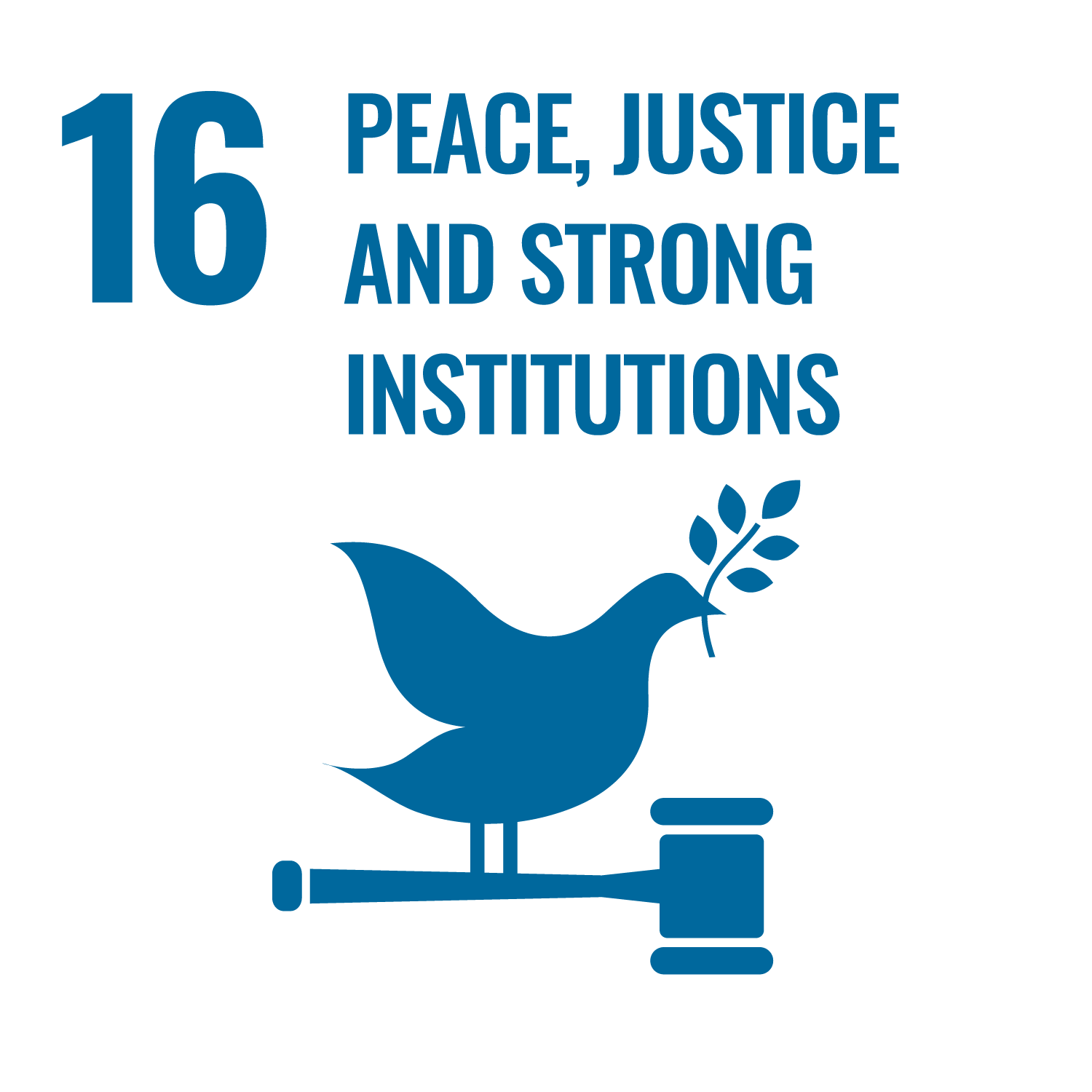 Goal 16. Peace and Justice Strong Institutions
Goal 16. Peace and Justice Strong Institutions
Stakeholder Engagement Policy
1-Purpose
This policy provides guidelines for AASTMT stakeholders’ engagement and communication. It ensures that AASTMT safeguards that stakeholder engagement activities are transparent, systematic, and effective.
2-Scope
The policy applies to all AASTMT activities with stakeholders, including its employees and staff who are undertaking stakeholders’ engagement activities.
3-Policy Statement
AASTMT recognizes that stakeholders’ engagement is essential to support the achievement of its strategic goals and that different levels of engagement are required for different efforts.
4- Policy Principles
Stakeholders Engagement activities in AASTMT have the following principles
-Transparency: ensure transparency in relationships, sharing truthful, sufficient, relevant, complete and useful information.
-Participation and engagement: encourage the participation and engagement of the Stakeholders in all of the AASTMT activities.
-Effective Communication: Activities should be communicated clearly with stakeholders.
-Active listening: practice active listening, encouraging bi-directional and effective communication.
-Consensus: work towards consensus with the Stakeholders, especially with local communities and indigenous populations, taking their viewpoints and expectations into consideration.
-Stakeholder Feedback: and their feedback should be taken into consideration and followed up in a timely manner.
-Analysis and Follow-up: Any Information derived from the engagement process should be open and honest, including results from evaluation activities and surveys. Regular analysis to understand stakeholders' main interests, concerns, and expectations
- Continuous improvement: seek continuous improvement, regularly reviewing Stakeholder engagement mechanisms to ensure that they respond in the most efficient way possible to the needs of each moment.
5-Policy Procedure
AASTMT follows the stakeholder engagement model.
5-1 Stakeholders Identification
AASTMT has the following stakeholders:
- Undergraduate Students, postgraduate students, Prospective Students, Alumni
- Academic and Administrative Staff
- Government and Private Agencies
- General Public, Local Community, Press, and Media
5-2 Stakeholders Mapping
AASTMT will develop a plan to engage with each group of stakeholders in an effective and efficient way. This mapping process is highly important because AASTMT will identify the most important stakeholders and those who have strong positive or negative effects on AASTMT Activities. So, AASTMT will make the best use of its resources by not over-communicating with groups that do not require the same level of attention as the high-interest and high-influence group.
5-3 Stakeholders Communication
Staff who are involved in stakeholders’ engagement shall plan the communications with stakeholders to guarantee the flow of clear and relevant information to stakeholders and to keep stakeholders’ engagement process effective and supportive. Thus, AASTMT uses different methods for communication with stakeholders such as Surveys, electronic surveys, satisfaction surveys, etc. Also, stakeholders' feedback is so important for AASTMT's future and activities.
5-4 Stakeholder Engagement Activities
AASTMT determines the appropriate engagement activities required and the level of engagement should be defined by the objective, outcomes, timeframes, resources, and levels of the stakeholder’s importance.
5-5 Action Plan and Continual Improvement
Staff involved in stakeholders’ engagement should identify opportunities from feedback and determine actions, revisit goals, and plan the next steps for follow-up the future of stakeholders’ engagement.
|
Policy title: |
AASTMT Stakeholders Engagement |
|
Approving body: |
SDG workforce committee |
|
Version: |
4 |
|
Last Review Date: |
2025 |
|
Next review date: |
2026 |
|
Policy owner: |
Legal affairs |
|
Summary of Changes |
Adding and improving the format in Stakeholders Engagement Principles section |
|
Lead contact: |
Procurement and Logistics Affairs |
|
Approval Signature
|
Dr. Yasser Gaber Dean of Scientific Research and Innovation |



